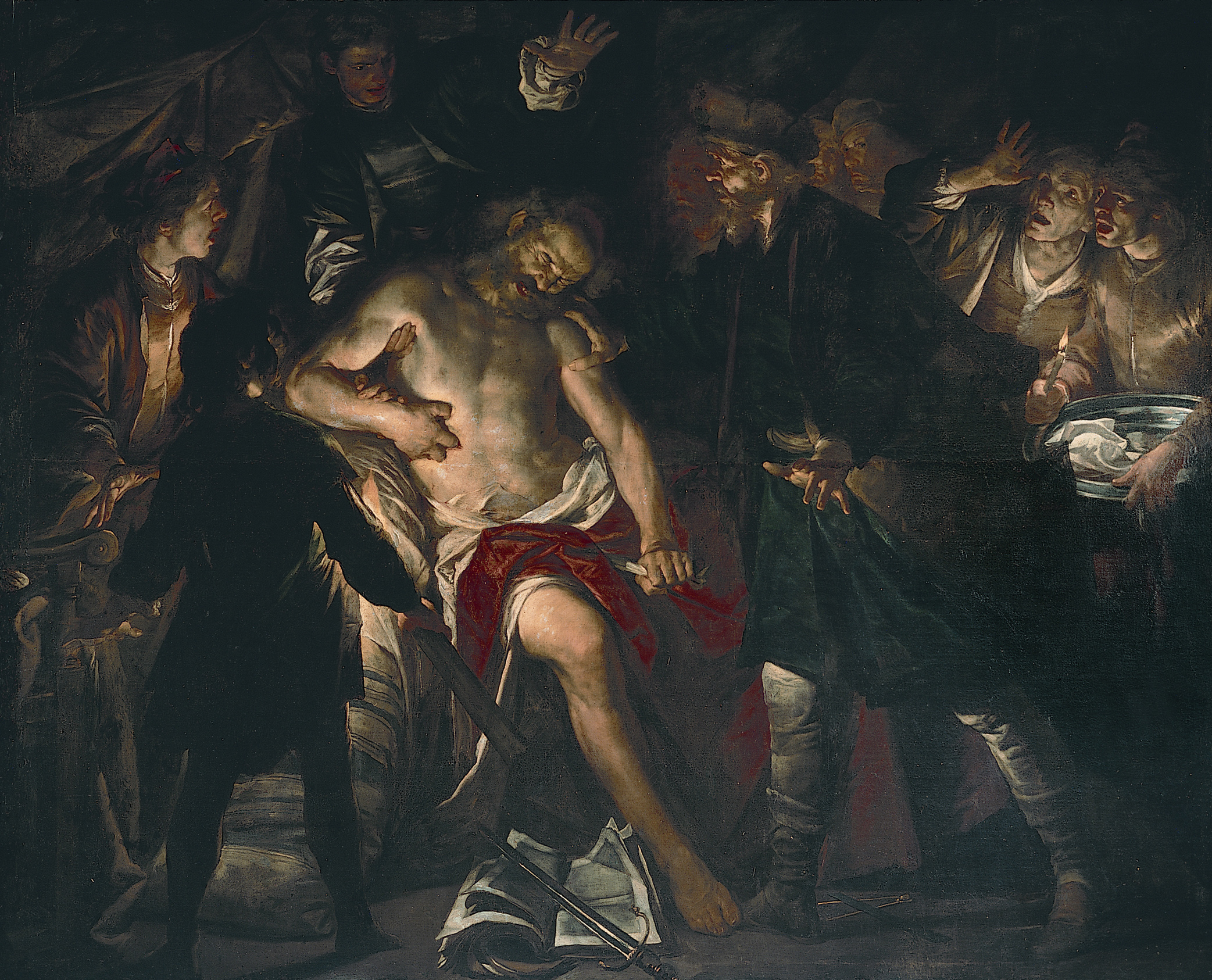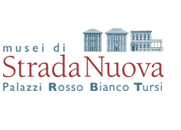
Click here to view image
The death of Cato
Geri Alfredo 1924 Genova - acquisto
Assereto, Gioacchino
painting
PB 1909
Unità di misura: cm; Altezza: 203; Larghezza: 279
olio su tela
L’ultimo Caravaggio. Eredi e nuovi maestri - Milano - 30 Nov. 2017 - 8 Apr.<br>SUPERBAROCCO. ARTE A GENOVA DA RUBENS A MAGNASCO - ROMA - 2022
In the great "nocturnal" painting of the Cambiaso Palace in Strada Nuova, Assereto depicts the suicide of the Roman tribune Marco Porcio Cato who, at the outbreak of the civil war between Caesar and Pompey, took the latter’s side and followed him to the East. After the killing of Pompey and the defeat of his followers, Cato decided to end his life by piercing his belly with a sword, but was rescued and medicated; during the night, left alone, he tore the bandages and, reopening the wound, caused his own death with clear determination. The night setting of the crowded scene, the choice to represent the most tragic of the episode, as well as the use of an artificial light from torches, that accentuates the exasperated gestures of the characters and focuses attention on the hand of Cato and his sword - instrument of the tragic act - appear elements that contribute to infuse the composition a tone agitated by figurative drama.
The canvas - datable to the years immediately following 1639, when the sources report news of a Roman stay of the painter - shows the influence of Nordic caravaggeschi as Matthias Stomer and Gerrit van Honthorst and reveals the great emotional and expressive force of the painting of this artist. The painting by Assereto, however, was attributed by nineteenth-century historiography to van Honthorst, who was also referred to as the author of the biblical subject La maga di Endor evokes for Saul the shadow of Samuel, work that was the pendant of Cato when the painting was in the collection of the marquises Cambiaso.




